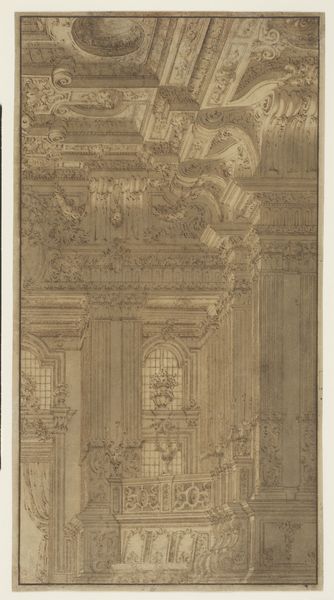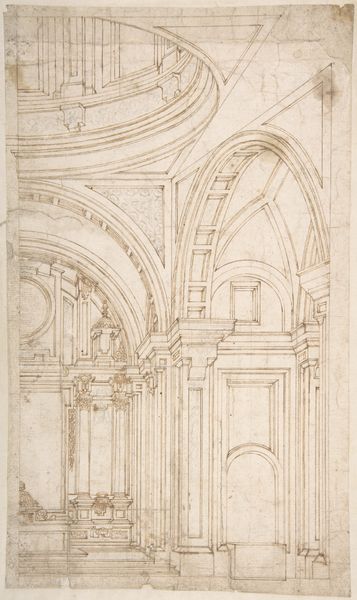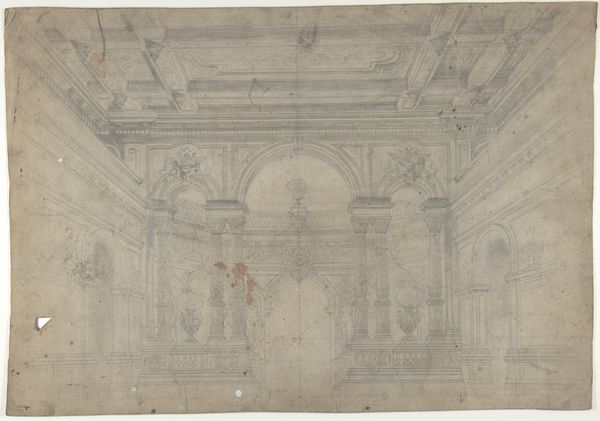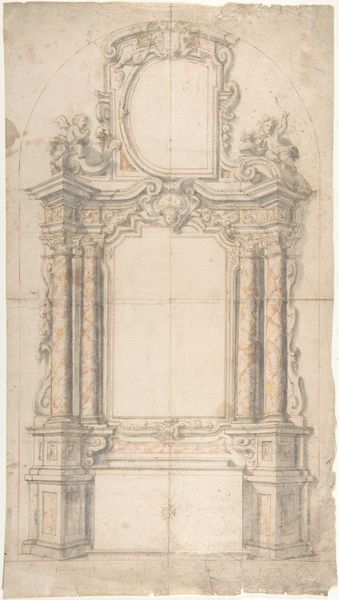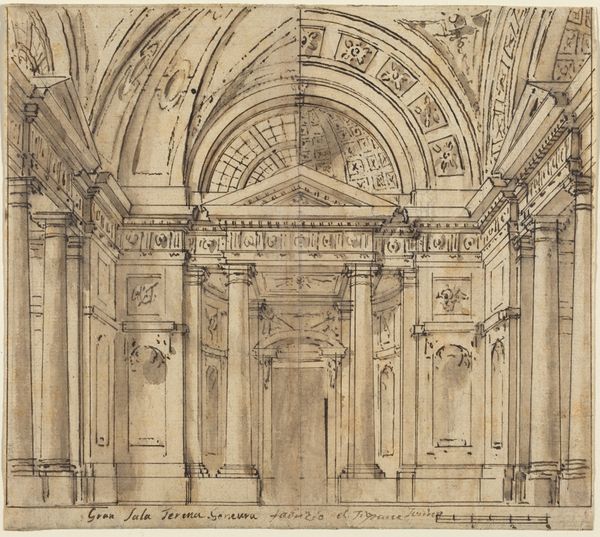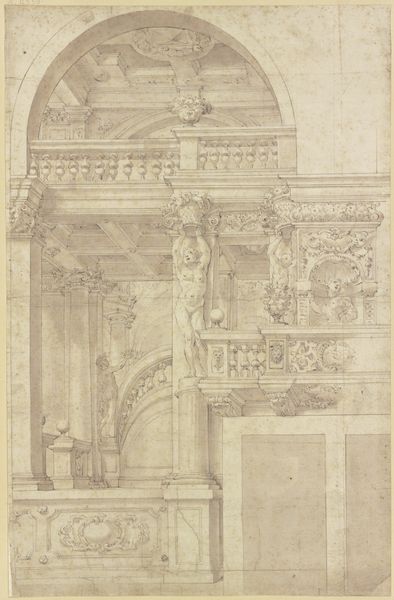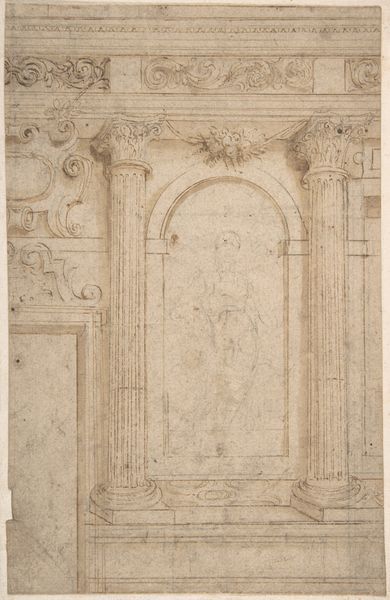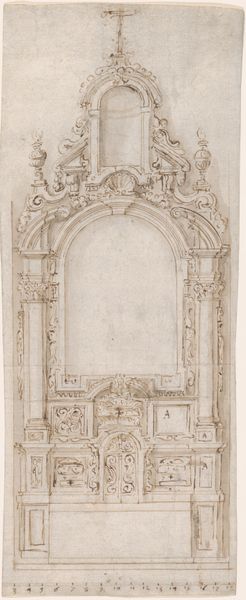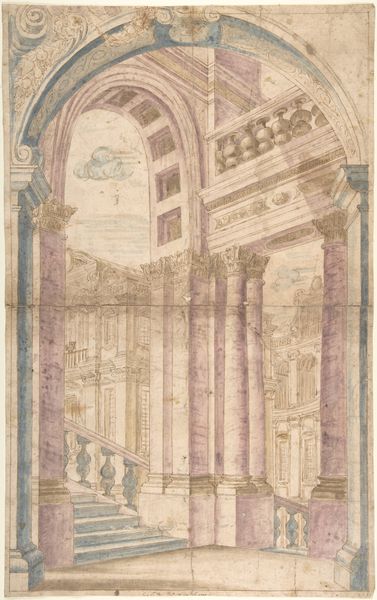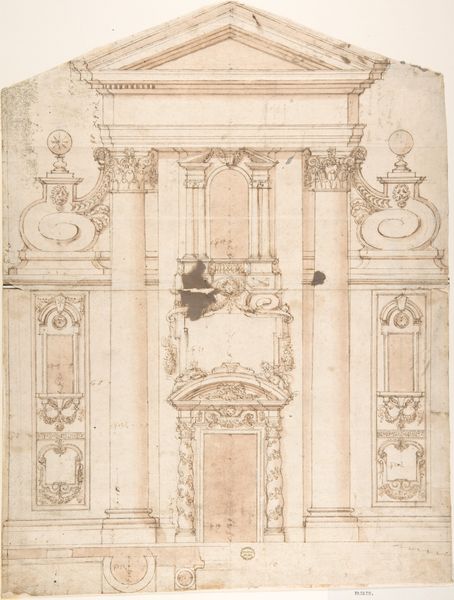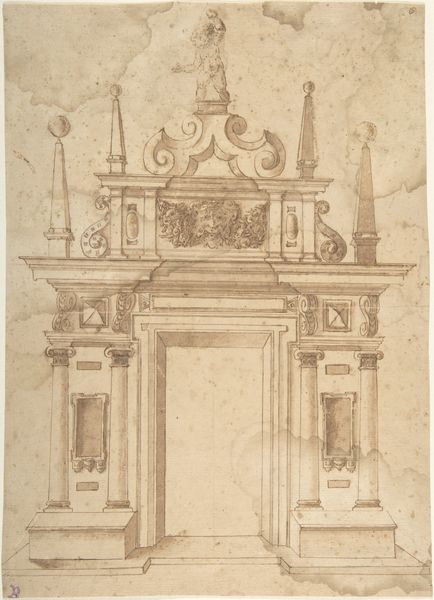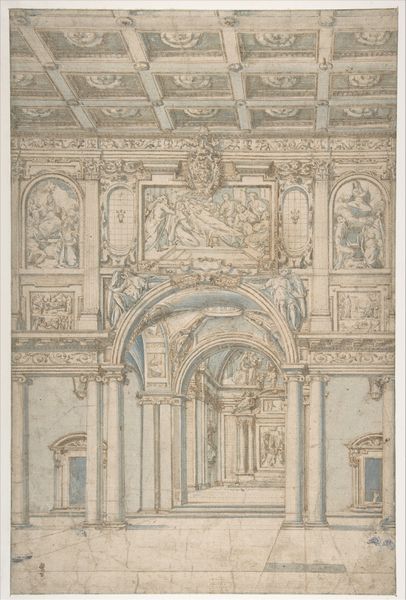
Design for an Elaborate Barrel-Vaulted Chapel 1481 - 1536
0:00
0:00
drawing, tempera, print, pencil, architecture
#
drawing
#
tempera
# print
#
perspective
#
11_renaissance
#
geometric
#
pencil
#
history-painting
#
academic-art
#
italian-renaissance
#
architecture
Dimensions: sheet: 31 15/16 x 16 13/16 in. (81.1 x 42.7 cm)
Copyright: Public Domain
Curator: Here we have Baldassare Peruzzi’s "Design for an Elaborate Barrel-Vaulted Chapel," dating roughly from 1481 to 1536, an Italian Renaissance architectural drawing rendered in pencil, tempera, and print. What strikes you first about this piece? Editor: An almost overwhelming sense of ordered grandeur, honestly. The linear perspective focuses the eye powerfully, leading inward toward a central, almost blank space. It’s as if the weight of centuries of tradition is pressing down. Curator: Absolutely. It is productive to situate Peruzzi’s chapel design within the political landscape of the Italian Renaissance. We see the church and powerful families competing through displays of wealth and piety, vying for control. Editor: It speaks volumes that even architectural designs became tools. That central space, it feels intended to awe the viewer. Do you see certain repeating symbolic motifs at play? Curator: Let's unpack the symbolism within that context of power dynamics. The geometric exactitude, that calculated sense of perspective - what statement are those architectural choices communicating? Think about control over the earthly and heavenly realms, an era where science was often viewed as heresy by the same religious institution commissioning such works. Editor: The arched forms, the meticulously detailed Corinthian columns… there's a clear nod to classical Roman architecture. In terms of cultural memory, the Renaissance sought to reclaim and repurpose the visual language of the Roman Empire. What about the symbolism and message that those icons transmitted across the ages? Curator: Right, they utilized these to create a lineage. Peruzzi certainly drew on historical symbolism to promote cultural supremacy. The very construction of the building as an event in the life of a patron reinforced a network of political influence, artistic vision, and social ideology that could be understood in the material and metaphorical senses. Editor: Yes, it speaks to that inherent tension within Renaissance art—a simultaneous look back and push forward. It is still captivating even as just a design, perhaps because of the unrealized potential within it. Curator: Indeed. Examining the context around pieces like these teaches us just as much about their artistic merit as it does about their purpose within the society of the time. Editor: I leave with that sensation of carefully organized details hinting toward a broader cultural tapestry.
Comments
No comments
Be the first to comment and join the conversation on the ultimate creative platform.
